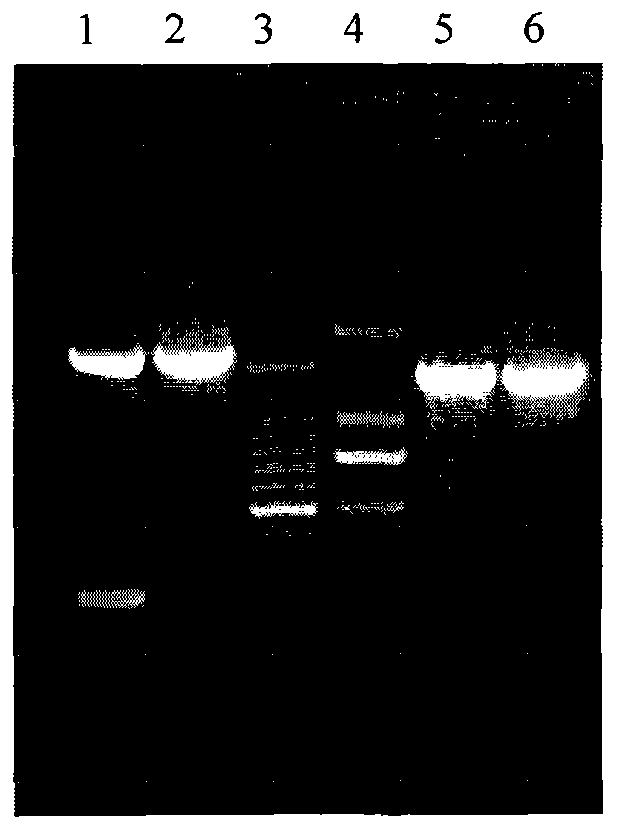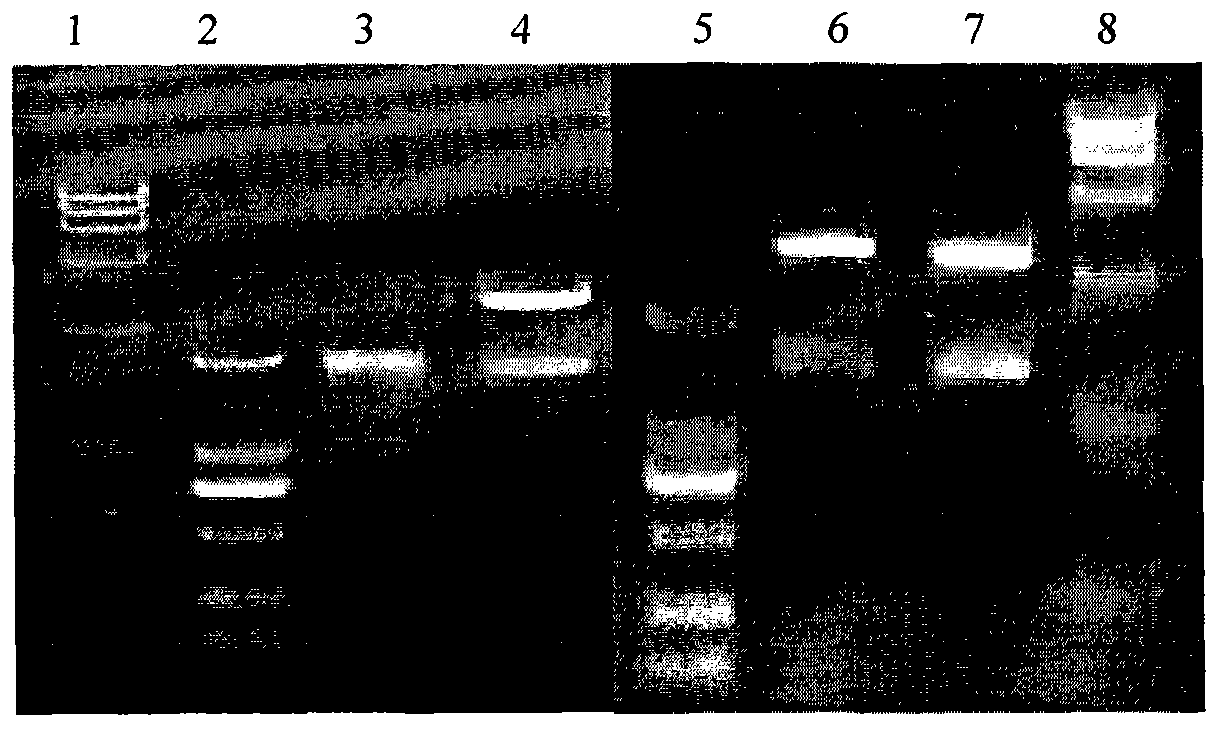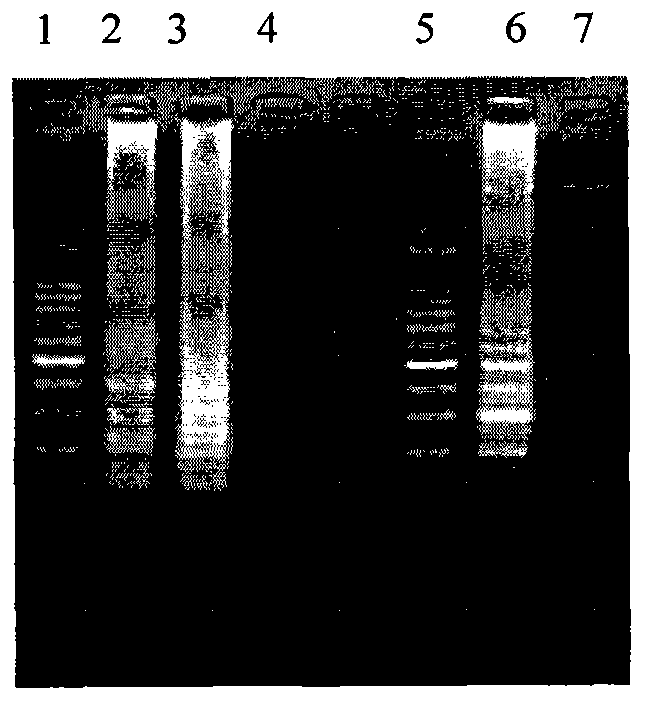Isothermal amplication rapid detection method of H7N9 avian influenza virus
A bird flu virus, technical detection technology, applied in the field of virus inspection, can solve the problem that cannot meet the increasing import and export goods
- Summary
- Abstract
- Description
- Claims
- Application Information
AI Technical Summary
Problems solved by technology
Method used
Image
Examples
preparation example Construction
[0041] 1.3 RNA extraction and cDNA preparation
[0042]Take the EP tube treated with DEPC water, add 1mL TRIzol and 200μL inactivated virus solution, mix well and place at room temperature for 5min; add 200μL chloroform, shake vigorously for 30s, let stand at room temperature for 3min, and centrifuge at 4°C for 15min to obtain a layered solution; Transfer the supernatant to a clean EP tube, add 500 μL of isopropanol, let stand at -20°C for 30 minutes, and centrifuge at 4°C for 15 minutes; remove the supernatant; add 1 mL of 75% DEPC ethanol, vortex, and centrifuge at 4°C for 10 minutes; The supernatant was dried in air for 5 min; 50 μL of DEPC water was added to the test tube. Reverse transcription was performed according to the M-MuLV reverse transcriptase process to obtain cDNA, which was stored at -20°C for later use.
[0043] 1.4 Construction of positive recombinant plasmids
[0044] Using specific primers for H7N9 avian influenza HA gene and NA gene, the cDNA was amplif...
Embodiment 1
[0059] Amplification of HA Gene and NA Gene of H7N9 Subtype Avian Influenza Virus
[0060] Take the inactivated virus liquid, extract the virus genome, and carry out reverse transcription according to the M-MuLV reverse transcriptase process to obtain cDNA. Use specific primers to amplify the HA gene and NA gene of the H7N9 subtype avian influenza virus. The results are as follows: figure 1 As shown, 1683bp of HA gene and 1398bp of NA gene were obtained after amplification, which was consistent with the theoretical amplification value.
Embodiment 2
[0062] Identification of positive recombinant plasmids
[0063] The amplified HA and NA genes were cloned into the pGEM-T easy vector and transformed into Escherichia coli TOP10 competent cells, the plasmid was extracted from the purified and amplified recombinant bacteria, and identified by enzyme digestion. The HA recombinant plasmid was used for EcoR I, NotI double cutting, NA recombinant plasmid single cutting with sfi I, the result is as follows figure 2 As shown, the constructed HA and NA recombinant plasmids were digested to obtain the target bands consistent with the theory. The constructed positive plasmid was sequenced, and the sequencing results showed that the amplified sequence was 100% consistent with the H7N9 sequence registered in the GISAID database, indicating that the constructed plasmid did contain the target gene fragment and could be used as a positive plasmid.
PUM
 Login to View More
Login to View More Abstract
Description
Claims
Application Information
 Login to View More
Login to View More - R&D
- Intellectual Property
- Life Sciences
- Materials
- Tech Scout
- Unparalleled Data Quality
- Higher Quality Content
- 60% Fewer Hallucinations
Browse by: Latest US Patents, China's latest patents, Technical Efficacy Thesaurus, Application Domain, Technology Topic, Popular Technical Reports.
© 2025 PatSnap. All rights reserved.Legal|Privacy policy|Modern Slavery Act Transparency Statement|Sitemap|About US| Contact US: help@patsnap.com



